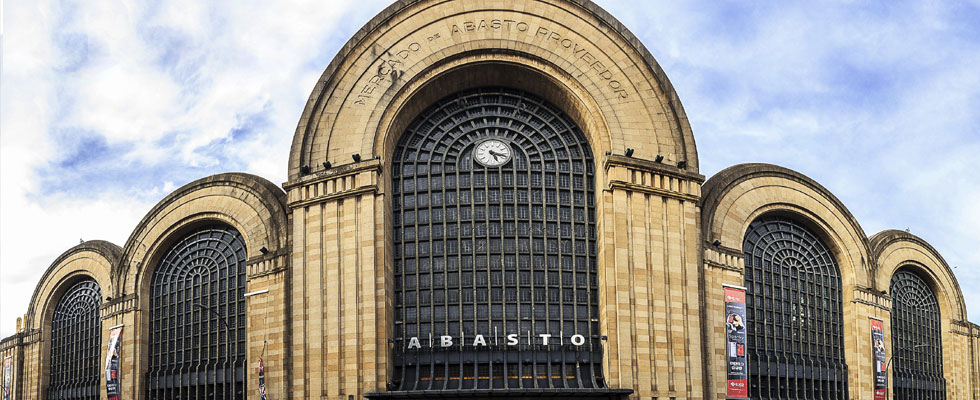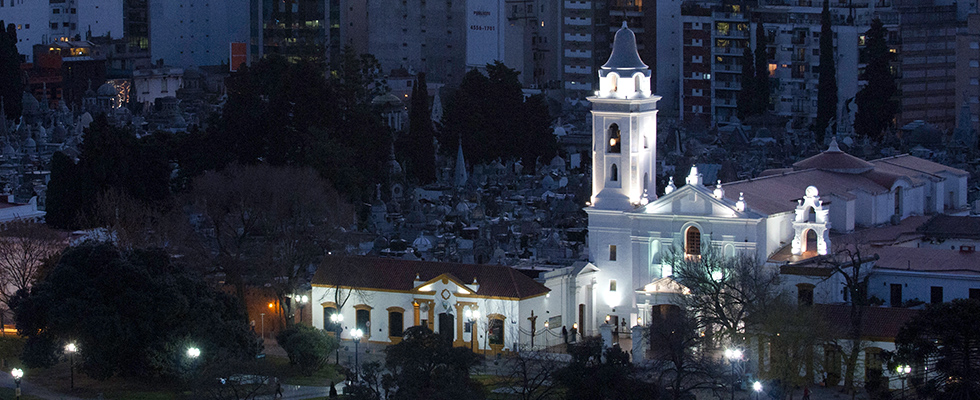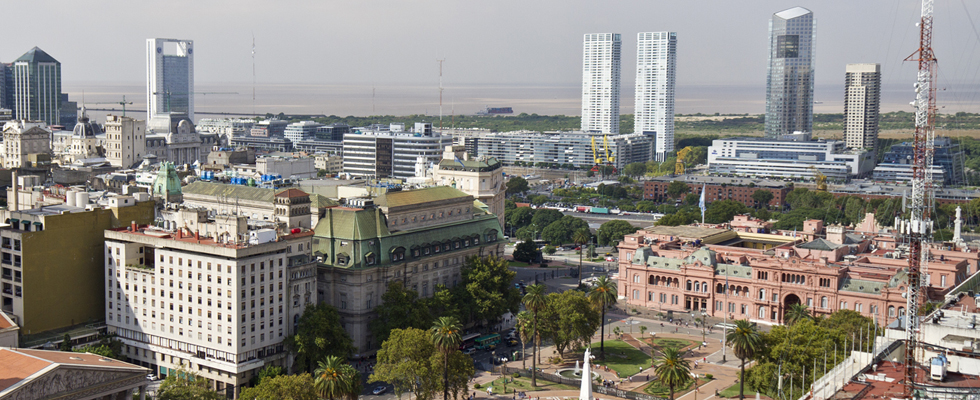Passing through the streets of Buenos Aires, you’ll be struck by the rich and eclectic mix of architectural styles on display. Private homes, small businesses and even car parks can reveal details that delight and intrigue, and that’s before we even mention the grand palaces, public buildings, and landscaped parks.
The city's wealth at the start of the 20th century together with a boom in immigration from Europe brought architects from Italy, Britain, France and Germany to add their contributions to the city's collage of styles. Here are just a few highlights to look out for on your travels through the city.
Colonial Style

Example: The Cabildo (colonial town hall).
The central downtown area of the city still retains traces of its Spanish colonial past. The simple architectural style of the period, with little colour, few decorations and simple arches, can be seen in the Cabildo in La Plaza de Mayo and the Manzana de los Luces, a former Jesuit mission, as well as the Basílica Nuestra Señora del Pilar in Recoleta. The Palacio Noel, now home to the Museo de Arte Hispanoamericano Fernández Blanco (Suipacha 1422), was built in the early twentieth century but replicates colonial and barroque influences.
Neoclassical

Example: National Congress building.
This style of architecture recalls the grandeur of Greek and Roman temples and palaces, with columns, domes, and arches that hightlight the hierachies of space. It was used to great effect to demonstrate the city's wealth and enlightenment ideals. Examples can be found in Buenos Aires in the National Congress with its green dome, the Casa Rosada, the Colón Theatre, the Metropolitan Cathedral, and the University of Buenos Aires' law school. Neoclassical influences can be seen in many parts of the city, but especially in the exclusive Avenida Alvear in the affluent Recoleta neighbourhood, with its elegant town houses and mansions.
Art Nouveau

Example: Casa de los Lirios, Rivadavia 2031.
With curved lines and geometric asymmetry, art noveau was the style that dominated the start of the 20th century in much of the world, and Buenos Aires was no exception. The Palacio Barolo (Avenida de Mayo 1370), which contains symbolism inspired by Dante’s Divine Comedy, is a prime example, along with the former Confitería El Molino (Rivadavia 1801). There are many examples of art nouveau architecture in the Balvanera neighbourhood: in the Avenida Rivadavia architect Eduardo Rodríguez Ortega built two impressive Gaudi-inspired masterpieces – the Casa de los Lirios (House of the Lilies), and beside it a building whose facade bears the legend “no hay sueños imposibles” (There are no impossible dreams) (Rivadavia 2027 and 2031). The architect Virginio Colombo also lived and worked in Balvanera and two of this rental houses can be seen opposite each other in Calle Hipólito Yrigoyen (numbers 2568-2572). His famous Casa de los Pavos Reales is at Rivadavia 3230.
Eclecticism

Example: The Water Palace (Palacio de Aguas Corrientes), Cordoba 1950.
Eclecticism was an architectural movement that blended ideas from different architectural styles and epochs. Arising at the time of the Second French Empire, the style was popular with Argentina's upper classes until 1916. The most exuberant example is the incredible "Water Palace", a former water pumping station built between 1887 and 1894 to supply the city’s running water. The building stands out for its decorative ceramic pieces produced by Royal Doulton & Co. in London and Burmantofts Company, in Leeds (UK). The roof tiles were made from green slate brought from France.
Art Deco

Example: Kavanagh building, Florida 1065.
Instantly recognisable for its geometric shapes and hard lines, Art Deco originated in France in the 1920s and was all the rage during the Great Depression and the 1940s. Outstanding examples of art deco architecture in Buenos Aires are the Kavanagh building – the tallest skyscraper in Latin America when it was built, and the Abasto market, a former produce market now converted into a modern shopping centre but retaining the building's original distinctive arches (Corrientes 4247).
Modern and contemporary styles

Known as the most artistic of Argentina’s architects, Clorindo Testa left his mark on the city in buildings such as the National Library (Aguero 2502) and the former London Bank building (now Banco Hipotecario at Reconquista 101), which follow the brutalist style of the 1950s-1970s. Other acclaimed modern Argentine architects include César Pelli, most famous internationally for the Petronas Towers in Kuala Lumpur, who was responsible for the Republica building (pictured, Viamonte 96) and the YPF tower (Macacha Güemes 515) in Puerto Madero, and Mario Roberto Álvarez, who designed the Teatro San Martín (Corrientes 1530) and the Somisa building (Roca 782).
Green tendency

Example: Buenos Aires city government headquarters, Uspallata 3160
The vision of a greener city with improved sustainability and better use of resources has begun to be reflected in new architecture. British architect Norman Foster’s award-winning headquarters for the Buenos Aires city government in the Parque Patricios neighbourhood (opened in 2015) is an examplar of modern sustainability standards, with vertical gardens and natural temperature regulation. The new International Convention Centre in Recoleta, to open in 2017, follows the same tendency, being built largely underground, with gardens and solar panels on the roof.
Charles Thays

No discussion of architecture in Buenos Aires would be complete without mentioning its parks and squares, which were largely shaped by Charles Thays. The French-born landscape architect certainly left his mark on the city, designing dozens of parks and public squares. In fact, his lasting touch is perhaps one of the main reasons why people often describe the city's public spaces as having a Parisian influence. Thays came to Argentina in 1889, aged 40, to design a park in Córdoba. He became fascinated with the young country and decided to spend the rest of his life here. As Buenos Aires' director of parks and walkways from 1891, he oversaw tree planting in the city streets and designed some of the city's best-known parks, including Parque Lezama (pictured) in San Telmo, the Parque Centenario in Caballito, and the sweeping Tres de Febrero park and Botanical Garden in Palermo.
Curiosities

For a contrast to the elegant mansions in Recoleta, check out the humble but colourful conventillos in La Boca. These communal dwellings built by Italian immigrants are made of corrugated metal and wood, and were painted using whatever paint could be found in the port - a tradition that artist Benito Quinquela Martín took advantage of when he repainted the houses, leading to the creation of what is now the Caminito street museum. The narrowest house in the city is the casa minima in San Telmo (Pasaje San Lorenzo 380), often claimed to be a house given to a freed slave by his master in 1813. Other curiosities include the house of eccentric artist Xul Solar (Laprida 1212), which is now a museum containing examples of his work.


